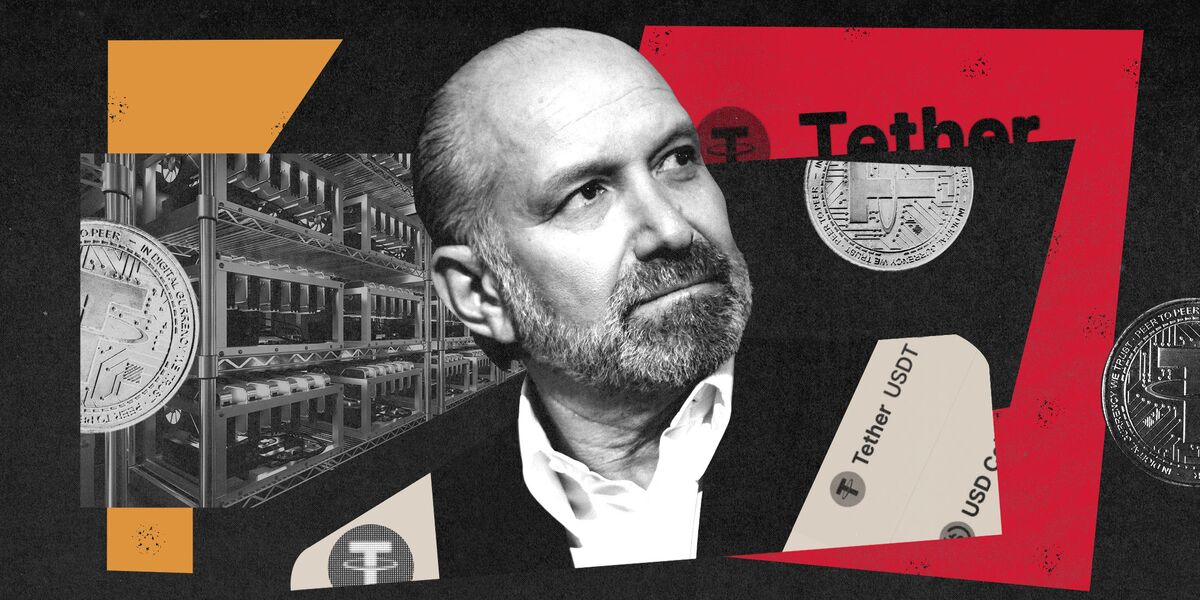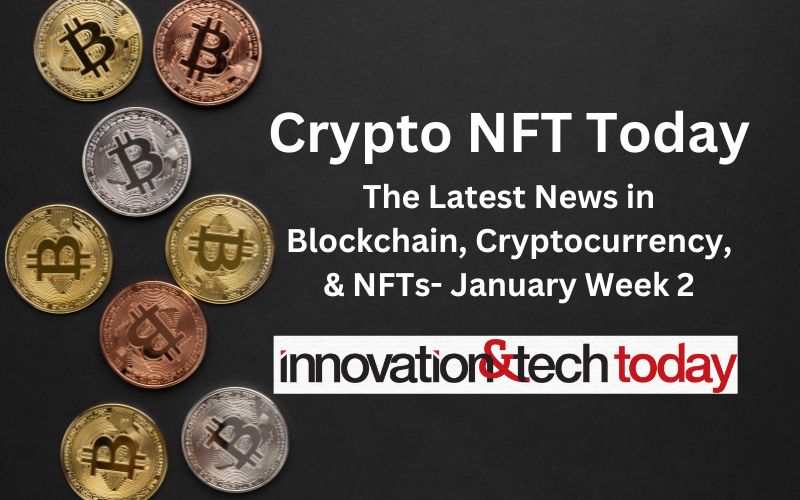Crypto
Ripple v. SEC: Why the crypto industry may have celebrated too early

Last month’s decision by a court in the U.S. District Court for the Southern District of New York on the SEC’s claims against Ripple Labs has been generally hailed as a victory for the token issuers and exchanges. However, the actual impact of the decision on the future of cryptocurrencies in the U.S. is not so clear.
By highlighting the principle that the SEC’s jurisdiction over digital assets depends on the nature of the offer or sale of such assets rather than the intrinsic qualities of the asset itself, the decision is indeed a positive development for the industry. But other favorable aspects of the decision for Ripple seem ripe for a reversal on appeal. Ironically, that could strengthen the SEC’s hand going forward.
An unusual decision
The SEC’s claims against Ripple hinged on whether Ripple’s distribution of its cryptocurrency, XRP, was a “security” for the purposes of the Securities Act. More specifically, the question was whether these transactions satisfied a three-pronged test for an “investment-contract” security devised by the Supreme Court over seven decades ago in SEC v. W.J. Howey Co.
Under the Howey test, transactions involving the (1) investment of money in (2) a common enterprise with (3) an expectation of profit from the efforts of others, are securities. If these transactions were securities, Ripple was required to make certain public disclosures (which it concededly did not make), along with observing other compliance obligations.
The court concluded that certain negotiated sales of large blocks of XRP institutional purchasers satisfied the Howey test (sales the court called “institutional sales”)–but that anonymous sales by Ripple on cryptocurrency exchanges (so-called “programmatic sales”) did not, nor did Ripple’s transfer or XRP to vendors or employees in exchange for services (termed “other distributions”). Thus, the SEC prevailed on its claim as to the institutional sales, but not as to other types of distributions of XRP. The SEC’s related claims against Ripple’s founder, former CEO, and current chairman of the board Christian Larson and the former COO and current CEO, Bradley Garlinghouse over Ripple’s institutional sales will continue to trial. Larson and Garlinghouse deny any wrongdoing.
The most striking feature of the decision is that the court applied the “expectation” element of the “expectation of profit from the efforts of others” differently to different groups of purchasers.
Normally, courts focus their analysis of this prong of the Howey test on whether a person with knowledge of all public information about the role of the people offering an investment (typically called “promoters”) in the future success of the investment would expect that the promoters’ ongoing efforts are key to profits. Instead, the court focused on the actual information available to different sets of purchasers. The court reasoned that since the institutional purchasers knew they were buying XRP from Ripple, and were provided marketing materials from Ripple, they would expect the value of the XRP to be affected by Ripple’s efforts. By contrast, the programmatic buyers’ assumed relative ignorance of Ripple’s role in developing, marketing, and distributing XRP led the court to conclude that these buyers would not reasonably expect Ripple’s activities to affect XRP.
As for the other distributions, the court concluded these transfers lacked the necessary “investment of money” to satisfy the Howey test. The ruling is in contrast to the SEC’s longstanding position that nearly any benefit to the promoter has value and can be considered an investment of money.
What it means for the industry
The cryptocurrency industry has long advocated for a more transaction-focused approach to Howey. By distinguishing among groups of XRP purchasers, the Ripple decision delivers one.
Animating the industry’s goal in this respect is a desire to exclude secondary market transactions from the SEC’s jurisdiction, among other motivations. The question is existential for many market intermediaries, particularly cryptocurrency exchanges, whose subjection to SEC jurisdiction turns on whether they deal, broker, clear, or operate an exchange for trading securities.
Here, the Ripple decision delivers for the industry again. By holding that knowing one’s privity with the promoter is key to the expectation of profit from the efforts of others, the court comes close to carving out secondary market transactions per se, and even (as was the case with the programmatic sales) immunizes anonymized direct sales from promoters like Ripple.
Similarly, if it stands, the court’s formalistic interpretation of the investment-of-money prong of Howey would seem to open the door to more extensive use of digital assets in employee compensation, developer grants, and promotional giveaways (eg. airdrops, a popular if controversial tool for the distribution of crypto tokens).
How an appeal could make things worse
Before the cryptocurrency industry spends too heavily on champagne, it should remember that the Ripple decision is not a precedential opinion, nor is it necessarily the last word on the case. The SEC has the right to appeal–and is expected to use it.
Beyond its novelty, the court’s focus on XRP purchasers’ specific access to information about Ripple yields a perverse result. The sale of XRP to the most sophisticated investors, who by virtue of the bespoke nature of the transaction were privy to the most information about how Ripple’s activities may affect the value of XRP, is a security, subject to the investor protections and restrictions mandated by the securities laws. Whereas, the offer and sale of XRP to retail investors, who dealt with Ripple in anonymous transactions through exchanges and otherwise, is not a security and does not require disclosure or offer those same investor protections. Those people who already have the most information are given a right to more, while those people with the least information go without.
The court’s ruling on the “other distributions” seems on similarly shaky ground. In addition to running up against precedent that “sales” of securities need not involve the transfer of tangible items of value, this interpretation appears to open loopholes in Howey for various non-traditional forms of financing. Indeed, it is even difficult to square with the established concept of “sweat equity.”
Should the Second Circuit Court of Appeals reverse either or both of the industry‑favorable elements of the Ripple decision, the SEC will be finally armed with precedential case law applying Howey to a cryptocurrency–a weapon of no small importance for its fights with the cryptocurrency exchanges Coinbase and Binance over whether the tokens they listed are securities.
Longer-term effects and benefits
Even if significant pieces of the Ripple decision are reversed on appeal, one aspect of the case is likely to provide lasting benefit to the cryptocurrency industry. The court was almost certainly correct to focus its Howey analysis on the transactions in question, rather than the underlying assets. Courts in the past have occasionally missed this subtle distinction–most likely because other parts of the definition of the term “security” in the Securities Act are tied to financial instruments themselves, such as stocks and bonds. But Howey addresses investment contracts, which is why its test focuses on the parties’ actions and expectations, which are driven by the facts and circumstances surrounding the relevant transactions.
Although the court’s distinction between groups of purchasers’ access to information is unlikely to survive appeal as meaningful for Howey test purposes, other purchaser differences might one day be dispositive. Most obviously, courts could draw lines between groups of purchasers over time. As decentralized token projects progress, it is plausible to imagine that the expected effect of the efforts of promoters on profits will change. These efforts might be relevant to profits for an early group of purchasers, but not for a later group after control of the project becomes fully decentralized. Similarly, as such projects mature, the motive for buying a cryptocurrency may change. A reasonable early purchaser might be drawn to financial returns (investment profits) while the primary motive for a later purchaser might be to use the token within a particular network or protocol (consumption).
If future courts take account of these distinctions between purchasers, defendants may have the Ripple court’s attention to differentiated transactional details to thank.
Peter Fox is a partner at Scoolidge, Peters, Russotti & Fox LLP.
The opinions expressed in Fortune.com commentary pieces are solely the views of their authors and do not necessarily reflect the opinions and beliefs of Fortune.

Crypto
$MELANIA Meme Coin launched: How to buy Melania Trump’s cryptocurrency – check quick guide – The Times of India

$MELANIA meme coin: US President elect Donald Trump’s wife Melania Trump has launched her own cryptocurrency, the $MELANIA meme coin, early Monday, shortly after her husband’s launch of the $TRUMP memecoin.
Melania Trump announced the launch on X (formerly Twitter), posting: “The Official Melania Meme is live! You can buy $MELANIA now.” This announcement generated significant engagement, resulting in increased token value.
For those wishing to acquire $MELANIA tokens, here is a detailed acquisition process:
Solana-Compatible Wallet for $MELANIA meme coin
According to an ET report, the first requirement is establishing a Solana-compatible digital wallet if you haven’t already. Recommended platforms include Phantom and Solflare, which offer secure storage and management of your $MELANIA tokens.
$MELANIA meme coin Official website launched
Access the coin’s official platform at melaniameme.com, where you’ll find comprehensive information about the token and purchase options.
Wallet Integration
Select the “Connect Wallet” option on the website to establish a connection with your Solana-compatible wallet, enabling direct platform interaction and transaction management.
$MELANIA Token Acquisition Methods
The platform offers two primary purchase methods:
Credit Card Transactions: Direct purchases are available using credit cards. Simply input your card information as requested, and the tokens will transfer to your linked wallet.
Cryptocurrency Exchange (SOL): Alternatively, use Solana (SOL) tokens for purchases. If you lack SOL, acquire it through cryptocurrency exchanges before proceeding with your $MELANIA token purchase via the website.
(Disclaimer: The above article is for information purposes only. It should not be seen as a recommendation to buy)
Crypto
Trump’s meme coin creates billions from thin air, rattles cryptocurrency market – The Times of India

A digital token debuted by President-elect Donald Trump has rattled the cryptocurrency market, attracting billions of dollars of trading volume while stoking concerns about conflicts of interest.
Trading under the “Trump” ticker on the Solana blockchain, the token’s market value surged to $15 billion over the weekend, data from CoinMarketCap show, after the Republican touted it on his social media accounts on Friday.
The digital asset’s market capitalization then slid below $10 billion on Sunday in New York after Trump’s wife Melania also unveiled a coin, drawing traders who seek to capitalize on rapidly shifting speculative demand for memes.
Meanwhile, the wider crypto market struggled over the weekend, including a dip in the largest token, Bitcoin, and a shaper retreat for second-ranked Ether. SOL, the cryptoasset associated with the Solana digital ledger hosting the Trump meme coins, bucked the trend and posted a rally.
Speculative flows
The “size of the capital flowing” to the Trump token left most other coins trading “poorly” outside of SOL and some related assets, said Sydney-based Richard Galvin, co-founder of hedge fund DACM.
The website for the president-elect’s token describes it as the “the only official Trump meme.” The project’s art features an illustration of the incoming US president with his fist in the air — a reference to his response in the aftermath of an attempt on his life during a campaign rally last year.
The small print on the website states the president-elect’s token isn’t intended to be an “investment opportunity, investment contract, or security of any type.” Still, crypto-minded Trump fans immediately started buying. Major exchanges like Coinbase Global Inc. and Binance Holdings Ltd. said during the weekend they intended to list the token on their platforms.
The website for Melania’s project also says that the token isn’t supposed to be an investment opportunity or security, adding that “Melania memes are digital collectibles intended to function as an expression of support for and engagement with the values embodied by the symbol MELANIA.”
Trump’s embrace
Trump made explicit overtures to the crypto industry in the months before and after his election. Bloomberg News has previously reported that he’s considering an executive order designating the asset class a “national priority.”
The president-elect’s previous forays into crypto include profitable collections of nonfungible tokens, digital collectibles that show him in a variety of poses and costumes, including as a superhero. Along with his sons, he’s also endorsed World Liberty Financial, a project that has been much-hyped but for which details remain scarce.
Representatives for Trump didn’t return requests for comment.
Crypto is notorious for meme coins, tokens with questionable inherent value that sometimes briefly surge if they catch a social media tailwind before sliding as attention turns elsewhere.
The Trump token traded at about $39 as of 7:30am on Monday in Singapore, down from an earlier peak of $75.35. Bitcoin slid to $100,000, Ether changed hands at $3,161 and a cooling SOL rally left the digital asset at roughly $240.
Crypto
Top Cryptocurrencies To Watch In 2025

2024 was a big year for crypto. What lies in store for 2025 and which are the top cryptocurrencies … [+]
The world of cryptocurrencies never stands still, and 2024 was no exception. It was a year marked by volatility, innovation and significant milestones that may set the stage for the future of digital assets. From regulatory crackdowns in major markets to the surprising embrace of cryptocurrencies by political leaders like U.S. President Donald Trump, the narrative around crypto has become more complex than ever before.
Major cryptos like bitcoin continued to dominate, bolstered by institutional investment and integration into traditional finance. At the same time, Ethereum’s transition to proof-of-stake matured, driving innovations in decentralized applications (dApps) and DeFi. Meanwhile, emerging sectors such as AI-driven tokens and meme coins captured the imagination of a new wave of investors, underscoring the diversity and dynamism of the cryptocurrency space.
Cryptocurrencies are highly volatile and involve significant risks. Always conduct your own research and consult with a qualified financial advisor before making any investment decisions. The information provided in this article is for informational purposes only and should not be construed as financial or investment advice.
There are literally millions of cryptocurrencies in existence. Still, the cryptocurrencies below are some of the top cryptocurrencies to watch in 2025, showcasing tokens shaping the present and redefining what is possible in the future of finance and technology.
Methodology Used To Pick These Top Cryptocurrencies
To identify the top cryptocurrencies for 2025, I focused on a mix of market metrics, innovation and real-world utility. Key considerations included market capitalization, price performance, and trading volume, as well as each project’s ability to address challenges in the blockchain ecosystem.
Technological advancements, strong ecosystems and adaptability to macroeconomic trends were critical factors. We also considered cultural relevance and community support, which play a significant role in the success of tokens like Dogecoin. This balanced approach highlights cryptocurrencies that are not only impactful today but are well-positioned for the future.
Bitcoin (BTC)
Bitcoin Overview
- Current Price: $95,575
- Market Cap: $1.9 trillion
- Circulating Supply: ~20 million BTC
Why Bitcoin Is A Top Crypto To Watch
Bitcoin, the world’s first cryptocurrency, continues to dominate the market with the “digital gold” narrative. Its fixed supply of 21 million coins ensures scarcity, which has been one of the drivers of its price rise to over $100,000 in 2024. The coin’s strong resilience in the face of regulatory scrutiny and market volatility has cemented its status as the cornerstone of the crypto economy.
Companies like MicroStrategy remain steadfast in their commitment to Bitcoin. In 2024, MicroStrategy continued to expand its Bitcoin holdings, becoming one of, if not the largest, corporate crypto investors. The company’s strategy underscores the growing trend of enterprises viewing Bitcoin as a strategic asset, not just a speculative one.
Also, in 2024, Bitcoin made headlines during the U.S. presidential election when former President Donald Trump endorsed it as a hedge against inflation and the declining dollar. This unexpected support from a high-profile political figure brought Bitcoin to the mainstream spotlight, sparking renewed interest from retail and institutional investors. 2025 will be critical as the new seemingly crypto-friendly administration gets into place.
So far, national adoption of any Bitcoin standard has been limited to countries like El Salvador. If the United States moves to legitimize Bitcoin further, and institutional demand continues, it will drive the value of Bitcoin to new highs in 2025.
Ethereum (ETH)
Ethereum Overview
- Current Price: $3,189
- Market Cap: $383 billion
- Circulating Supply: 120.1 million ETH
Why Ethereum Is A Top Crypto To Watch
Ethereum entered 2025 after a somewhat underwhelming performance in 2024. While its transition to proof-of-stake and ongoing scalability upgrades have solidified its position as a leading blockchain for decentralized applications (dApps) and DeFi, Ethereum faced stiff competition from faster and more cost-efficient alternatives like Solana.
Compared to Bitcoin’s resurgence in 2024—buoyed by institutional adoption and political endorsements—Ethereum’s growth was more modest. While it remains a powerhouse in the blockchain ecosystem, its market share in key sectors like DeFi and NFTs has declined slightly due to the rise of these alternative platforms.
However, Ethereum’s continued relevance lies in its adaptability and vast developer ecosystem. The rollout of Layer 2 solutions like Arbitrum and Optimism has helped to address scalability issues, ensuring Ethereum remains a foundational layer for decentralized innovation. With the Ethereum ecosystem continuing to evolve, the platform is well-positioned to maintain its leadership role in the crypto space.
Solana (SOL)
Solana Overview
- Current Price: $187
- Market Cap: $90 billion
- Circulating Supply: 400 million SOL
Why Solana Is A Top Crypto To Watch
Solana is one of the newer blockchains, as compared to the O.G.s of Bitcoin and Ethereum but has nevertheless established itself as a leading alternative to Ethereum, gaining traction in 2024 with its unique combination of speed, scalability and low transaction costs. Solana’s infrastructure is capable of processing up to 65,000 transactions per second with near-zero fees, making it a prime choice for applications requiring high throughput, such as gaming, DeFi and NFTs.
While Ethereum struggled with scalability issues, Solana attracted developers and projects looking for faster and cheaper solutions. Major NFT marketplaces expanded their presence on Solana, and DeFi protocols leveraged the platform’s efficiency to offer competitive services. This led to a significant increase in adoption and a steady rise in Solana’s price and market cap throughout 2024.
However, Solana’s rapid ascent hasn’t been without challenges. The network experienced several outages in 2024, raising concerns about reliability. Despite this, the platform’s commitment to improving its infrastructure and expanding its ecosystem has reassured developers and investors alike.
Comparatively, Solana’s price performance in 2024 outpaced Ethereum’s growth percentage-wise, underscoring its increasing popularity and market confidence. With ongoing ecosystem developments and partnerships, Solana is poised to remain a major player in the cryptocurrency landscape in 2025, offering a viable alternative for projects seeking scalability and cost-efficiency.
Fetch.ai (FET)
Fetch.ai Overview
- Current Price: $1.25
- Market Cap: $3.28 billion
- Circulating Supply: 2.6 billion FET
Why Fetch.ai Is A Top Crypto To Watch
Artificial Intelligence (AI) adoption has surged over the past few years, and it was only a matter of time before that spilled over to the crypto space. Although countless tokens focus on AI, Fetch.ai is among the most popular.
Fetch.ai enables the creation of decentralized autonomous agents that can perform tasks like data sharing, trading, and infrastructure optimization. As AI adoption surged in 2024, Fetch.ai gained attention for its practical applications, including smart city infrastructure and supply chain automation.
The platform’s modular architecture makes it highly adaptable for various industries, allowing businesses to build tailored solutions for complex problems. In 2024, Fetch.ai expanded its ecosystem with integrations into popular blockchain networks and partnerships with enterprises focusing on automation and efficiency. These developments increased the token’s utility and attracted a broader range of developers and investors, cementing Fetch.ai’s place as a pioneering force in decentralized AI technologies.
The FET token has benefited from the broader AI hype that resonated across traditional and decentralized markets. Its token saw substantial price growth as investors bet on the intersection of AI and blockchain as a transformative sector for the coming years. Focusing on real-world utility and cutting-edge technology, Fetch.ai remains a top contender for 2025.
Dogecoin (DOGE)
Dogecoin Overview
- Current Price: $0.35
- Market Cap: $50.1 billion
- Circulating Supply: ~148 billion DOGE
Why Dogecoin Is A Top Crypto To Watch
Crypto wouldn’t be crypto without meme coins. Dogecoin, the original meme coin, holds a unique position in the cryptocurrency market. What started as a joke has evolved into a major player, supported by an enthusiastic global community and high-profile endorsements from figures like Elon Musk. In 2024, Dogecoin experienced a resurgence in popularity, driven by a mix of humor, community-driven projects, and increasing real-world utility.
Unlike many speculative meme coins, Dogecoin has started to establish itself as a viable payment solution. Businesses, including major brands, began accepting Dogecoin for transactions, boosting its relevance beyond internet culture. In addition, Musk’s ongoing support on social media has consistently propelled the coin into the spotlight, making it a favorite among retail investors.
Dogecoin also benefits from its simplicity and accessibility, which resonate with new entrants to the crypto space. With its low transaction fees and a fast-growing network of supporters, Dogecoin has proven that it’s more than just a meme—it’s a cultural phenomenon with staying power. As 2025 unfolds, Musk’s focus on crypto, along with industry attention, will likely ensure that Doge remains a key Crypto for 2025.
Bottom Line
The cryptocurrency market in 2025 stands at a crossroads, brimming with potential but shadowed by significant uncertainties. While Bitcoin continues to enjoy institutional backing and cultural relevance, Ethereum faces intensifying competition from alternative platforms like Solana, and newer sectors such as AI-driven tokens and meme coins are still carving out their place in the ecosystem. The optimism around these innovations is tempered by questions about long-term utility, scalability and the sustainability of market momentum.
Beyond the crypto-specific challenges, the broader global economy casts a long shadow. Persistent inflation, rising interest rates and geopolitical tensions threaten to shake investor confidence across all asset classes, cryptocurrencies included. In 2024, these economic headwinds created ripple effects in the crypto space, as tighter monetary policies reduced the speculative capital that has historically fueled the market. If these trends continue, cryptocurrencies may struggle to replicate the explosive growth seen in their earlier years.
Additionally, regulatory scrutiny remains a looming concern, with governments worldwide grappling to establish clearer frameworks—or harsher crackdowns—for digital assets. High-profile bankruptcies, network outages, and concerns over security and decentralization have raised valid skepticism about whether the market can deliver on its lofty promises.
While the projects highlighted in this article showcase some of the most compelling opportunities in the crypto space, they are not without risks. Investors should approach 2025 with cautious optimism, staying informed and critically evaluating the market. Cryptocurrencies may still hold the potential to redefine finance and technology, but their trajectory will depend as much on the resilience of the global economy as on their ability to address internal challenges. The year ahead promises both excitement and volatility, a hallmark of the crypto ecosystem.
-

 Science1 week ago
Science1 week agoMetro will offer free rides in L.A. through Sunday due to fires
-
/cdn.vox-cdn.com/uploads/chorus_asset/file/23935558/acastro_STK103__01.jpg)
/cdn.vox-cdn.com/uploads/chorus_asset/file/23935558/acastro_STK103__01.jpg) Technology1 week ago
Technology1 week agoAmazon Prime will shut down its clothing try-on program
-
/cdn.vox-cdn.com/uploads/chorus_asset/file/25826211/lorealcellbioprint.jpg)
/cdn.vox-cdn.com/uploads/chorus_asset/file/25826211/lorealcellbioprint.jpg) Technology1 week ago
Technology1 week agoL’Oréal’s new skincare gadget told me I should try retinol
-
/cdn.vox-cdn.com/uploads/chorus_asset/file/25832751/2192581677.jpg)
/cdn.vox-cdn.com/uploads/chorus_asset/file/25832751/2192581677.jpg) Technology5 days ago
Technology5 days agoSuper Bowl LIX will stream for free on Tubi
-

 Business6 days ago
Business6 days agoWhy TikTok Users Are Downloading ‘Red Note,’ the Chinese App
-
/cdn.vox-cdn.com/uploads/chorus_asset/file/25835602/Switch_DonkeyKongCountryReturnsHD_scrn_19.png)
/cdn.vox-cdn.com/uploads/chorus_asset/file/25835602/Switch_DonkeyKongCountryReturnsHD_scrn_19.png) Technology3 days ago
Technology3 days agoNintendo omits original Donkey Kong Country Returns team from the remaster’s credits
-

 Culture2 days ago
Culture2 days agoAmerican men can’t win Olympic cross-country skiing medals — or can they?
-
/cdn.vox-cdn.com/uploads/chorus_asset/file/24774110/STK156_Instagram_threads_1.jpg)
/cdn.vox-cdn.com/uploads/chorus_asset/file/24774110/STK156_Instagram_threads_1.jpg) Technology7 days ago
Technology7 days agoMeta is already working on Community Notes for Threads

















